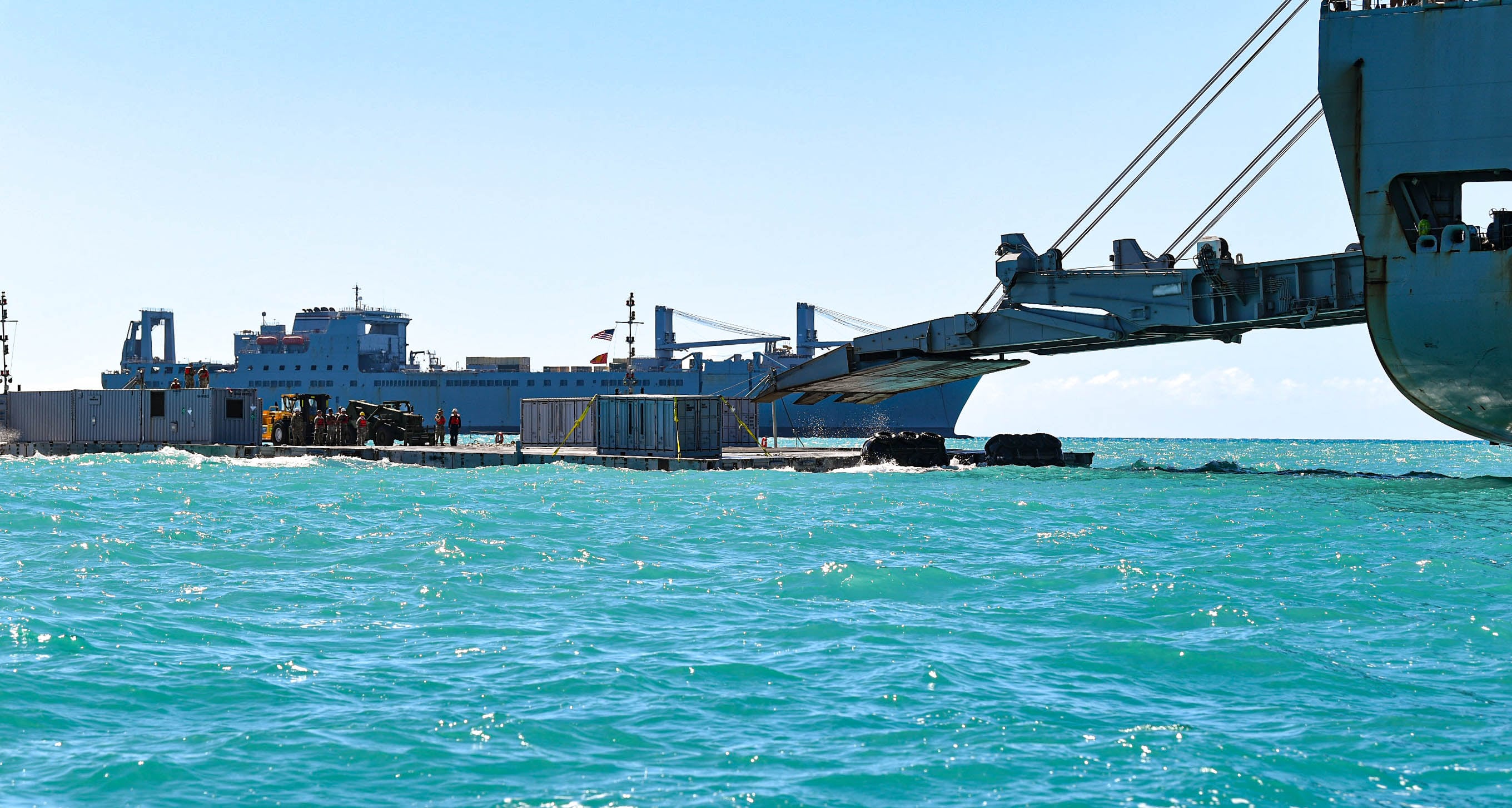Seeking to move away from its reliance on hauling equipment back stateside for repairs, the Pentagon is working with allies and partners to better sustain capability forward in operational theaters, beginning with the Indo-Pacific region.
Being able to fix gear close to the fight is considered critical to any future conflict with China, according to officials.
The Pentagon recently released a regional sustainment framework that would “satisfy demand closer to the point of need,” while enhancing both U.S. and regional partners’ capabilities, Assistant Secretary of Defense for Sustainment Christopher Lowman told reporters at a recent briefing.
“For the past two and a half years, we’ve been focused on the realities of sustaining the U.S. joint force in a contested theater and what it would take to ensure success and mitigate some of the risk of relying on long, over-ocean lines of communication to retrograde equipment back to the United States for repair and then return,” Lowman said.
Historically, sustainment has been viewed solely as a national responsibility, with the U.S. government sustaining its own forces in theater.
The Pentagon’s new, partner-focused plans are “really a recognition that sustainment can be performed through a coalition and a network of regional providers, because each of those regional allies has capability, industrial capability, maintenance, repair and overhaul capability and a desire to support the work,” Lowman said.
The idea is not to build new maintenance and repair capabilities in theater, but to take advantage of what already exists while “making the appropriate changes to accommodate specific U.S. needs and then utilizing that through a joint venture arrangement, as opposed to a U.S. funded, built, owned and operated capability,” Lowman said.
The Pentagon’s under secretary of defense for acquisition and sustainment, Bill LaPlante, and Lowman recently signed the strategy laying out the regional sustainment framework to align maintenance, repair and overhaul capabilities globally.
Such a strategy would cover sustaining equipment that has experienced normal wear and tear or battle damage.
The framework will also provide theater commanders multiple options to redirect equipment sustainment and “creates a higher level of uncertainty within adversaries’ planning cycles, and thereby enhancing deterrence,” Lowman said.
The plan is to establish the framework in the Indo-Pacific theater first, and the Defense Department is already working with five nations there to put together maintenance, repair and overhaul capability for American and partner equipment.
Lowman said he was unable to disclose the countries the U.S. is working with in the Pacific as terms of agreements are still being negotiated.
But he said the Defense Department is working with five Indo-Pacific countries to establish appropriate projects and to identify industrial partners, both U.S. and regionally based.
The Pentagon plans to build out regional sustainment partnerships within the European and Middle East theaters in fiscal 2025, followed by South America in FY26 and Africa later on, Lowman said.
INDOPACOM is being prioritized given the U.S. national defense strategy’s focus on China as the pacing threat, but also because it presents the greatest contested logistics challenge because relying on long, over-the-ocean lines will no longer prove effective if the U.S. finds itself in a war against China.
Already in the European theater, because of support for Ukraine’s fight against the Russian invasion, sustainment partnership capabilities are emerging within the context of NATO cooperation, but the Pentagon plans to apply lessons learned from the INDOPACOM pathfinder effort to other key theaters, according to Lowman.
Ideally, regional partners will come to the table with existing capability because those countries are similarly equipped, or are equipped with U.S. produced weapon systems, “so they have repair capabilities that we’ll capitalize on,” he said.
The Defense Department will also take a look at capabilities like shipyards that are not currently configured to accommodate America’s specific requirements, but would require money for expansions and workforce training, Lowman said.
Less desirable, but also under consideration, is to look at places where capability does not exist and build it, but “that would entail the greatest amount of capital investment,” Lowman added.
Already, the U.S. has seen what regional sustainment can look like through small examples during major exercises like Talisman Sabre in Australia. During the exercise, a vehicle was damaged during a road march and was able to be repaired in country using Australian parts.
In addition to the regional sustainment framework, Lowman said the Pentagon is also engaged in a major push to use advanced manufacturing techniques forward in theater, such as additive or subtractive manufacturing and 3D printing to make parts.
“What we’re doing is enabling a digital framework in order to transmit intellectual property to the point of manufacture and then, of course, secure that intellectual property at the point of manufacture and finally to ensure that the parts produced meet our standards of manufacture so that they’re safe and suitable to operate,” Lowman said.
Jen Judson is an award-winning journalist covering land warfare for Defense News. She has also worked for Politico and Inside Defense. She holds a Master of Science degree in journalism from Boston University and a Bachelor of Arts degree from Kenyon College.





